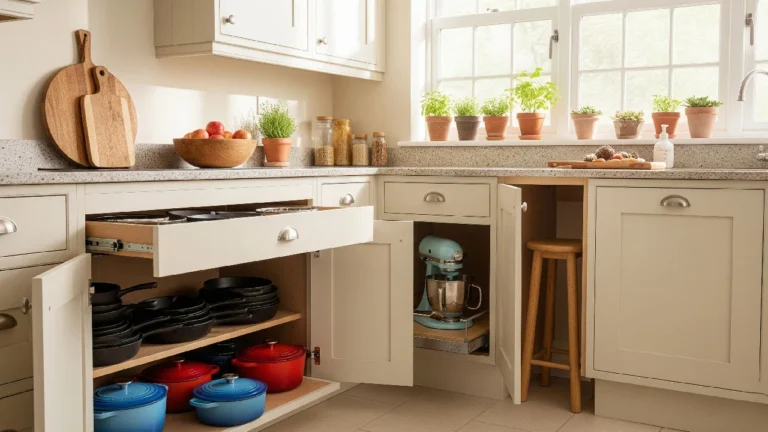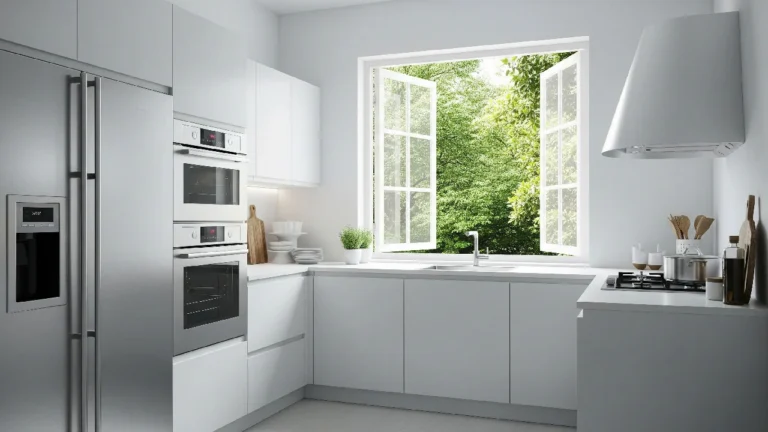3 Kitchen Items That Transfer Heat Slowly – Best for Safe and Slow Cooking
Wooden utensils, ceramic cookware, stone and clay made items and silicone items transfer heat slowly.

Are you tired of burning your fingers while cooking? I’ve been there too, more times than I can count. But some kitchen items can save your fingers.
Over the years, I’ve learned that not every kitchen item needs to be made of metal. Some materials are real lifesavers because they don’t transfer heat quickly. They make cooking safer and so much easier.
Today, I want to share with you 3 kitchen items that transfer heat slowly and have saved my hands from countless burns.
These are things I use in my kitchen every day, and trust me, once you start using them, you’ll wonder how you ever managed without them.
Items in the Kitchen That Transfer Heat Slowly
Kitchen items that transfer heat slowly are wooden utensils, ceramic cookware, and silicone items. Besides, stone and clay-made cooking pots and pans are also slow-heated kitchen items.
Are you planning to set up a new kitchen or upgrade your existing kitchen? Check out this kitchen essentials list for new home.
1. Wooden Utensils
Let me tell you, if there’s one item in my kitchen that I trust blindly while cooking, it’s my wooden spoons and spatulas. You can leave them in a hot pot for hours, but they won’t betray you by turning into a hand-burner like metal utensils do.
Why? Because wood doesn’t let heat travel through it quickly. It’s filled with tiny air pockets that block the heat from moving up the handle.
Now, why do I always keep wooden spoons nearby when making my favorite curries or sauces? Because they’re just so practical:
- No More Burnt Fingers: You can stir hot soups or bhuna a curry without worrying that the handle will get too hot to touch.
- Keeps Flavors Pure: Wooden spoons never react with sour things like tomato paste or vinegar, so the taste stays exactly how you want.
- Kind to My Cookware: They’re soft on my non-stick pans—no ugly scratches like metal spoons do.
- Stays with You for Years: If you take care of them, these wooden spoons will stay with you for a long time, almost like old kitchen companions.
Of course, wooden utensils have their little flaws too. You can’t use them over a high flame, or they’ll scorch.
And since they’re porous, if you don’t clean them properly, they might soak up food smells or stains. I always oil mine once in a while to keep them smooth and crack-free.
2. Silicone Bakeware
Silicone is a type of rubber which also transfers heat slowly. Even after sitting in the oven for 20 minutes, my silicone cupcake tray comes out warm but never scalding hot. It’s such a relief to be able to handle bakeware without oven mitts sometimes!
When it comes to baking or handling hot oven trays, I used to be terrified of accidentally grabbing something and burning my fingers. But ever since silicone bakeware entered my kitchen, those worries are almost gone. Silicone is like that soft, flexible friend who bends but never gets too hot to handle.
Here’s why I absolutely love using silicone bakeware:
- Cool to Touch: Whether it’s a muffin mold or a spatula, silicone doesn’t get dangerously hot, saving your fingers every time.
- Flexible & Non-Stick: You can pop out cupcakes, cookies, or even frozen items with ease—no more scraping or greasing.
- Perfect for Baking & Freezing: Silicone can go from the oven to the freezer without any fuss.
- Easy to Clean: A quick rinse or wipe, and it’s as good as new.
One of my favorite things is using a silicone spatula when making thick sauces or batters. I can stir comfortably, scrape every corner of the bowl, and I never worry about the handle heating up even if I leave it resting on a hot pan.
Is it Unhealthy to Bake with Silicone?
Yes, it may become unhealthy when you cook in high heat. Silicone can melt at high temperatures and mix with food.
I must tell you; silicone bakeware isn’t perfect for everything. It is best for oven and microwave. You can also use silicone spatulas for normal low heat cooking.
3. Ceramic Cookware
Ceramic items also transfer heat slowly. You know, ceramic is made from clay then fired up in a kiln. Because of its dense structure, heat doesn’t rush through it like metal. This makes ceramic perfect for slow cooking, like stews, casseroles, or baked pasta
If you ask me which cookware makes my slow-cooked dishes turn out perfect every time, I’ll say it without a second thought ceramic pots and baking dishes. These are like the calm, patient cooks in my kitchen.
Here’s why I swear by ceramic cookware:
- Even Heat: Perfect for recipes where slow, uniform cooking is the key.
- Keeps Food Hot: Ceramic holds onto heat, so your baked dishes stay piping hot while you enjoy family time.
- No Taste Interference: Acidic foods like tomato sauce or lemony marinades? Ceramic doesn’t react, so your flavors stay fresh and pure.
- Beautiful: They look so nice that I often serve directly from the ceramic dish—less cleanup too!
But like everything else, ceramic has its little quirks. It’s a bit slow to heat up, so if you’re in a hurry, it might test your patience.
And you have to be gentle with it—sudden changes in temperature can cause cracks. Oh, and they’re heavy! So, I always handle them with care, especially when they’re hot.
Some More Kitchen Items that Heat up Slowly
Bamboo made kitchen items, stone and clay pots also transfer heat slowly. You can also consider these types of kitchen items for cooking.
Bamboo Utensils and Stemers
Like wood, bamboo is a poor conductor of heat. Bamboo utensils, cutting boards, and steamers stay cool even when used near hot cooking areas. Plus, they are eco-friendly and very durable.
Stone made items
Stone are like their ceramic cousins. They heat up slowly, distribute heat evenly, and keep food warm for a long time after cooking.
Clay Made Items
Clay made pots are traditional and fantastic for slow cooking. Clay made utensils may not be available everywhere. They absorb heat slowly, release it evenly, and maintain moisture in food.
These types of kitchen items are most popular in many Asian and mediterranean kitchens for slow-cooked dishes.
Conclusion
Choosing the right kitchen tools isn’t just about cooking better, it’s about cooking safer. Wooden utensils, ceramic cookware, and silicone bakeware are small changes that protect your hands and give you more control everyday cooking.


